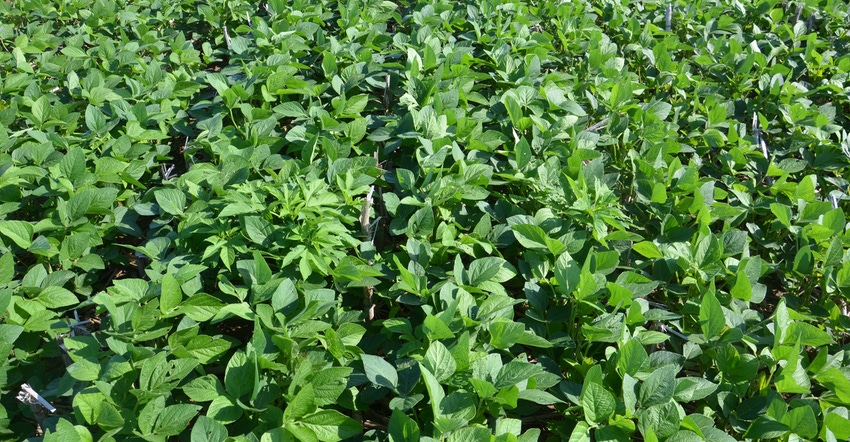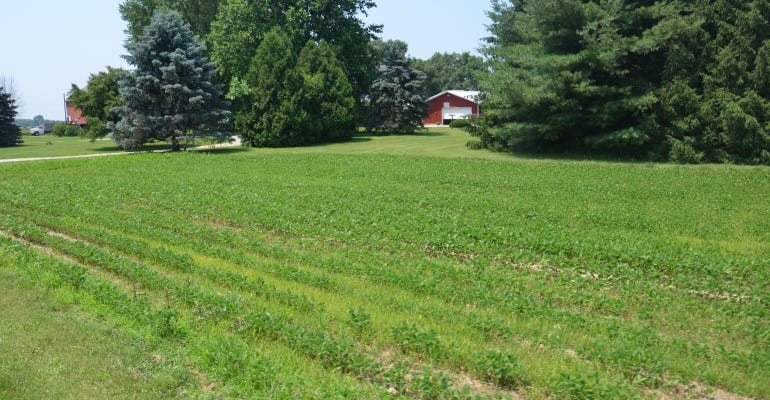
Sometimes your best-laid plans for weed control don’t work like you hoped. That’s when you look for the best solution to less-than-perfect situations.
Bill Johnson, Purdue University Extension weed control specialist, took a hard look at the two fields pictured here. While it would have been better to act before they reached these stages, he offers recommendations based on the fields as they appear here.
Large ragweeds
In the photo above, Johnson estimates the big ragweed in the foreground is about 12 inches tall. These are Roundup Ready 2 soybeans. The size of the ragweed makes it more difficult to bring down than if it had been caught earlier, he notes. “It’s off-label size-wise for every herbicide I can think of off the top of my head. It’s legal to spray it, but you’re on your own if it doesn’t work.”
If you know the ragweed isn’t ALS-resistant, you could burn it back with FirstRate plus glyphosate, Johnson recommends. If plants are ALS-resistant, he would opt for Flexstar plus glyphosate. Because there is also a small amount of volunteer corn and a few grass escapes in the field, he suggests adding Select or Assure to the mix as well. Both can provide good control of volunteer corn.
The goal at this stage is to burn down top growth so the ragweeds don’t compete with soybeans during the rest of the season, Johnson says. Don’t be surprised if some that are burned back show regrowth later in the season because they were very tall before they were sprayed.
Grassy soybeans
Whether these 30-inch-row soybeans (below) weren’t sprayed for grass or residuals were applied but didn’t get activated in time doesn’t matter at this point, Johnson says. The key now is to control the grass.

TALL GRASS: You’ve likely already lost yield due to the size of the grass in these beans, Bill Johnson says. His best advice is to spray this field as soon as possible.

If you don’t know what kind of resistance, if any, the soybean varieties have to herbicides, come in with postemergence grass herbicides, he says. Choose from either Assure or Select. If the soybeans are glyphosate-resistant, glyphosate becomes an option. Likewise, if they’re LibertyLink soybeans, Liberty is an option.
You would want to look at the field more closely to see what other broadleaf weeds might be present before deciding what to add to the mix to control other weeds, he says. Potential options for broadleaf control also depend upon whether the beans are non-GMO or which GMO trait for herbicide resistance they contain. You would adjust your selections accordingly, Johnson says.
Editor’s note: This article is part of a series of weed control recommendations based on real-life field situations. These recommendations are not all-inclusive. For more details, refer to the 2019 Ohio, Indiana and Illinois Weed Control Guide.
About the Author(s)
You May Also Like




